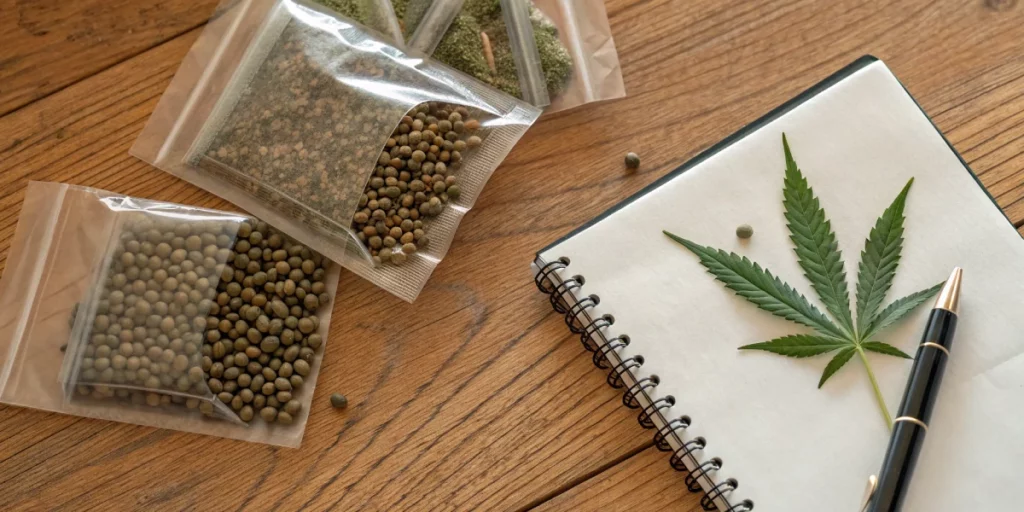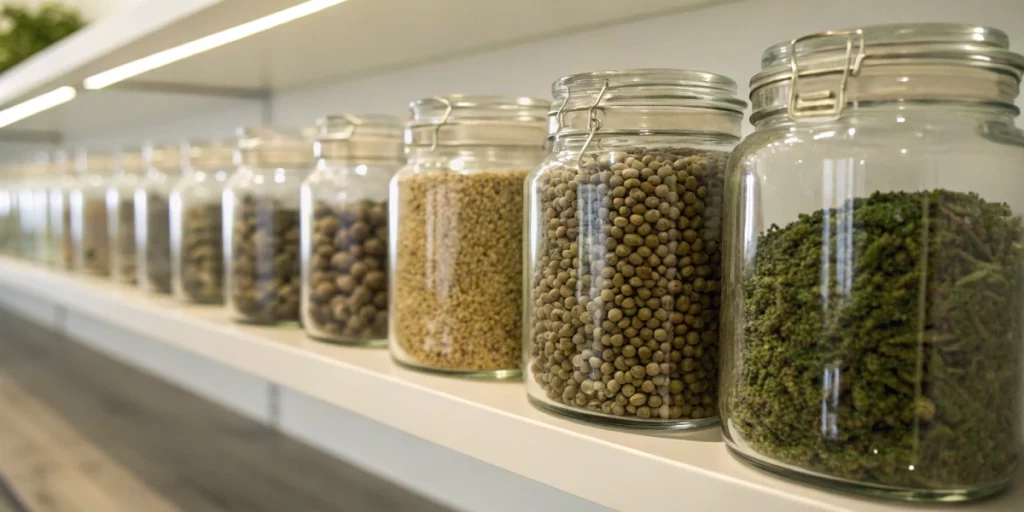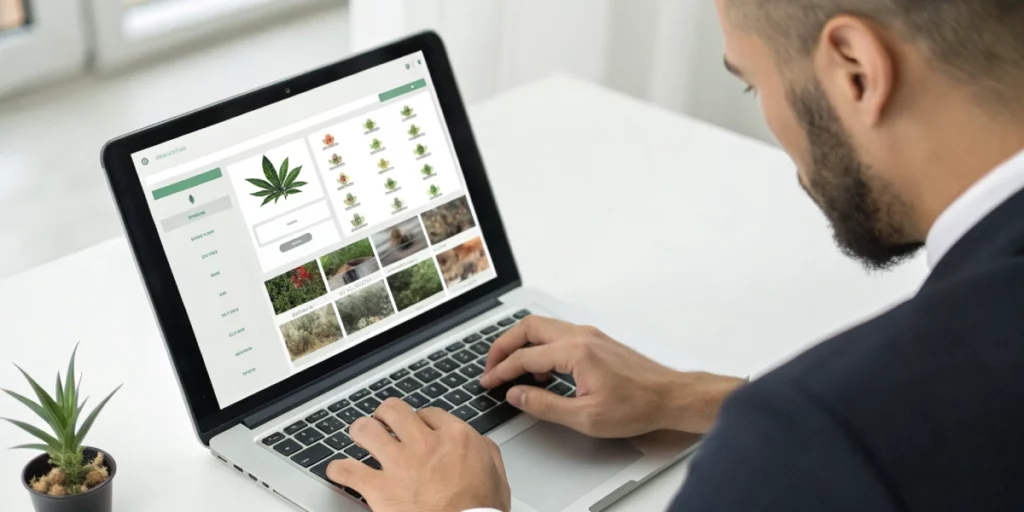How Cannabis Seed Auctions Work
Auction formats explained
First, many platforms host sealed bid formats where each bidder submits a private offer. The system reveals the highest offer after the deadline and awards the lot to that bidder. This method rewards careful research and bold bidding. Next, live auctions let attendees place bids in real time. An auctioneer guides participants through each increment. This format adds excitement and pushes bidders to act quickly during heated moments.
Meanwhile, proxy bidding appears on some websites. You enter the maximum you will pay and the system increases your bid only as needed to stay ahead. That feature saves you from constant monitoring while ensuring you never exceed your limit. Finally, Dutch auctions appear less often. They start at a high price that declines until someone accepts the current rate. This approach encourages swift decisions or waiting for lower prices.
Bidding timelines
First, most events list the start and end dates in advance. You can mark calendars for both private and public auctions. That timeline gives you time to review seed profiles and pedigrees. Meanwhile, some platforms open lots early for preview before accepting bids. You use that window to compare different strains or counts without pressure.
Additionally, countdown timers on auction pages remind you how much time remains. You may set alerts when less than an hour remains or when the lot enters its final minute. Many bidders save automatic notifications that ping their devices. By doing so, they avoid missing last-second opportunities to win rare seeds.
Payment and delivery
After winning a lot, you receive an invoice by email or via the auction dashboard. It lists accepted payment methods, which often include credit cards, bank transfers, or digital wallets. Always verify fees and currency conversion charges before confirming. That step prevents surprises and delays.
Next, sellers dispatch seeds once payment clears. Reputable platforms require tracking numbers and estimated delivery dates. You can follow packages as they move through customs and postal services. Ultimately, prompt shipping matters most to those who plan germination schedules.
Finding Upcoming Seed Auctions
Online auction platforms
Several websites specialize in cannabis genetics and host regular sales events. You register with basic contact information and verify age requirements. Then you explore upcoming lots sorted by strain, rarity, or breeder. Some platforms send newsletters with curated highlights each week.
Furthermore, global marketplaces often list auctions alongside fixed-price offerings. You may browse sealed bid and live auctions side by side. Many platforms also display bid histories and current highest offers. That transparency helps you gauge competition before entering.
Industry event calendars
Trade shows and cultivation conferences often feature live auctions. Organizers publish calendars that list dates and locations months in advance. You may attend events in person or tune in to live streams. Either option lets you witness bidding wars and pick up expert tips from breeders.
Meanwhile, some industry blogs aggregate auction schedules into searchable calendars. You filter by region, event type, or spotlighted breeders. By following those feeds, you never miss a chance to bid on premium genetics.
Seed bank announcements
Major seed banks often announce auctions directly on their websites and social channels. You follow breeders on social media to receive real-time updates about new lots and trial runs. Some brands tease exclusive drops that only bidders on their mailing lists can access.
Additionally, joining breeder forums opens communication channels where insiders share tips on upcoming sales. You participate in discussions to learn which strains breeders plan to auction next. That proactive networking gives you an edge over casual buyers.

Preparing to Bid Successfully
Budget planning
First, set a clear spending limit based on your available funds and project goals. Allocate enough for multiple lots if you target diverse strains. Otherwise, you risk exhausting your budget before high-priority seeds appear.
Next, break down your total into per-lot maximums. That way you avoid impulsive bids that derail your plan. Use spreadsheets or simple notes to track open lots, current highest bids, and your ceilings. Effective budgeting ensures you stay competitive without overspending.
Researching strain pedigrees
Before bidding, you research each strain’s genetic background. You check parent plants’ traits, cannabinoid profiles, and flowering times. That information reveals the potential yield and effects you can expect.
Furthermore, you read breeder journals and independent reviews. You dig into growing reports to spot common issues such as mold susceptibility or stretch during flowering. Armed with that context, you assess whether each lot suits your cultivation environment and goals.
Setting bid limits
After research, you determine your maximum bid for each lot. That figure reflects both rarity and expected value. For sought-after genetics, you may accept higher limits than for more common varieties.
Then you program proxy bids or reminders at key price thresholds. Those alerts prompt you to adjust your strategy if competitive tensions rise. By defining limits ahead, you avoid emotional bidding that leads to overspending or regret.
Evaluating Auction Lots
Seed count and variety
First, note the number of seeds included in each lot. Some auctions offer packs of ten, while others list larger multiples. You weigh seed count against price to calculate cost per seed. That ratio informs whether the lot delivers fair value for your objectives.
Next, examine whether breeders include testers or special phenotype selections. Lots with unique crossovers or experimental runs can carry higher prices. If you seek specific traits, these curated offerings may justify a premium compared to bulk seed bundles.
Genetic lineage
Research each strain’s ancestry to understand its traits and stability. You follow pedigree charts and breeder notes to spot dominant and recessive genes. That knowledge clarifies how uniform your crop will grow and perform.
Furthermore, you look for proven parent lines known for resilience, yield, or desired cannabinoid ratios. Those background checks prevent surprises when seeds germinate. In effect, strong lineage often translates into reliable outcomes in your grow space.
Seller reputation
Check reviews and ratings for each breeder or seller before you bid. You read feedback from past winners and cultivation reports. Reliable sellers maintain high germination rates and accurate labeling.
Additionally, you verify shipping practices and customer service responsiveness. That diligence ensures you work with professionals who stand behind their genetics. Trustworthy sellers reduce the risk of receiving old or mislabeled seeds.
Post-Auction Best Practices
Seed storage upon arrival
As soon as seeds arrive, you place them in airtight containers with desiccant packs. Proper humidity control preserves viability for longer periods. You store containers in a cool, dark place such as a freezer or refrigerator crisper to maintain stability.
Next, you label each container with strain name and arrival date. Clear labeling prevents confusion when you plan germination months later. By following this routine, you safeguard your collection until you are ready to plant.
Germination scheduling
Plan germination based on your grow calendar and local season. You map out when to soak seeds and transfer seedlings under lights. By carefully timing White Widow Autoflower germination and growth, you ensure the plants complete flowering before shifting seasons.
Additionally, you choose germination methods that suit each strain. You might use paper towels, starter cubes, or direct soil depending on breeder recommendations. Aligning methods with genetics maximizes success rates and healthy early growth.
Feedback and reviews
After your grow, you document outcomes and share honest reviews. You note germination rate, vigor, yield, and any challenges. This feedback system guides other bidders and strengthens community trust.
Furthermore, you leave ratings on auction platforms to help future buyers. Offering balanced perspectives on seed performance fosters transparency. In turn, breeders gain insights to refine future auctions and improve genetics.

FAQs about cannabis seed auctions
Are online auctions legal everywhere?
Online cannabis seed auctions legality depends on local laws and import regulations. You must check your country’s and state’s seed import rules before bidding. Some regions permit seed sales only for research or industrial hemp, while others ban all cannabis genetics shipments. Always verify regulations to avoid customs seizures and legal issues when participating in any auction.
How can I verify seed authenticity?
To confirm seed authenticity, choose auctions hosted by reputable breeders or certified seed banks. Look for lot numbers, batch records, and germination guarantees. You may also request third-party lab reports or DNA testing certificates when available. Transparent sellers often provide documentation that matches seed labels with genetic profiles.
What payment methods are accepted?
Auction platforms typically accept credit cards, bank transfers, and digital wallets such as PayPal or cryptocurrency. Some sellers also accept escrow services to hold funds until you confirm seed arrival in good condition. Always review payment terms, fees, and refund policies before submitting bids to ensure a smooth transaction.





